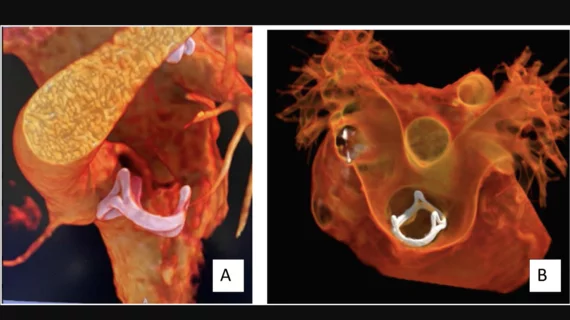SCCT shares new recommendations on use of CT imaging to guide congenital heart disease treatment
The Society of Cardiovascular Computed Tomography (SCCT) has released a new expert consensus document focused on using cardiac computed tomography (CT) to guide the treatment of patients with congenital heart disease.
The document, published in full in the Journal of Cardiovascular Computed Tomography, represents a collaboration between SCCT, the Society for Cardiovascular Angiography and Intervention (SCAI) and the Congenital Heart Surgeons’ Society (CHSS).[1] The groups aimed to help standardize definitions of right ventricular outflow tract (RVOT) dysfunction while providing key details about a variety of RVOT interventions used to treat both pediatric and adult patients presenting with congenital heart disease and/or pulmonary valve dysfunction.
The document outlines how to effectively acquire cardiac CT examinations and report prior structural heart disease interventions among this patient population, focusing specifically on standards related to transcatheter pulmonary valve replacement. A detailed summary of currently available bioprosthetic pulmonary valves is also included to help cardiologists, surgeons and other members of the heart team make the best possible choice for each procedure.
“CT is an essential tool for evaluation of all forms of congenital heart disease” B. Kelly Han, MD, writing group co-chair and the document’s corresponding author, said in a prepared statement. “The heart team concept that has been instrumental in optimizing intervention in aortic, mitral and tricuspid valves has now been applied to the RVOT. The unique collaboration with adult and pediatric surgeons (CHSS) and interventionalists (SCAI) optimizes interventional planning for all patients with RVOT dysfunction across the age spectrum.”
SCCT previously led the creation of expert consensus documents focused on using cardiac CT to treat cardio-oncology patients and using coronary computed tomographic angiography (CCTA) to treat emergency department patients presenting with acute chest pain. Additional details on the society’s efforts to standardize care for cardiac patients are available here.
Update: The full expert consensus is available here, but the publisher is experiencing some delays. The document may not be available to the public until July 25.

